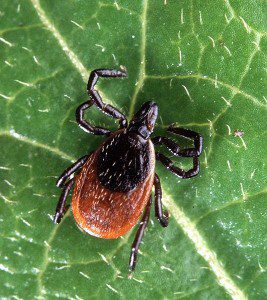
Image courtesy of Wikipedia
Siphonaptera: Pulicidae, Ctenocephalides felis.
Adult Cat Fleas are one of the most important pests of homes, lawns and pets in the United States. There are other flea species but the Cat Flea is the one most often encountered. Surprisingly, adult fleas make up only a minor portion of the total flea population in an infested area such as inside a home. Most of the time the eggs and larvae compose about 80% of the fleas in a home. Fleas prefer to spend their entire adult life on their host but obviously are shaken loose during the activities of the host animal (jumping, running, scratching, grooming.) Inspection and vacuuming of a home should always be thorough. Hotspots that often require extra attention are usually where pets frequent. Adult fleas, flea eggs and future food for larvae all fall off of the host in the same general area. Being sensitive to light, the larvae are usually close by but underneath or behind objects. When putting together an Integrated Pest Management (IPM) approach to flea prevention knowledge of all flea cycles and stages are very important so contact an Absolute Pest Control trained Technician if you need any further information.

Image courtesy of Wikipedia
Ixodida: Ixodidae, Ixodes scapularis.
Ticks: Ticks are the only members of the order Acarina that can be recognized without a microscope. Ticks feed only on the blood of vertebrates, making them one of the least favorite visitors in our homes. Hard ticks and soft ticks are the two major groups that are pests.
Most ticks spend the bulk of their life on or near the ground, waiting for a suitable host animal. Since they cannot run, hop, fly or move quickly, ticks must climb onto an appropriate object such as tall grass or weeds or up onto fences and siding of buildings. It is from these advantageous positions that they wait for a suitable host to pass by. When they detect vibrations and chemical cues such as host odors or exhaled carbon dioxide, ticks will fall from their perch or stretch out (holding on to their perch with only 2 or 4 of their rear legs) and hope to snag or attach onto a passing host (e.g., a mammal with a fur coat or pants and socks worn by humans.)
Certain ticks carry organisms with diseases as Rocky Mountain spotted fever, Lyme disease, typhus, rickettsial pox, relapsing fever, tularemia, Colorado tick fever and Texas cattle fever. Another health threat posed by certain ticks attacking humans involves a poorly understood condition called “tick paralysis”. This occurs during the feeding process when the host is afflicted with a paralytic condition, which develops gradually and may result in death. Paralytic symptoms disappear rapidly upon removal of the tick. Most of the tick problems which you might encounter are in and around homes, and do not involve the disease- carrying species.
Proper identification of the tick and timely treatment is of utmost importance when dealing with organisms associated with ticks. The above pictured tick is a Deer Tick.
